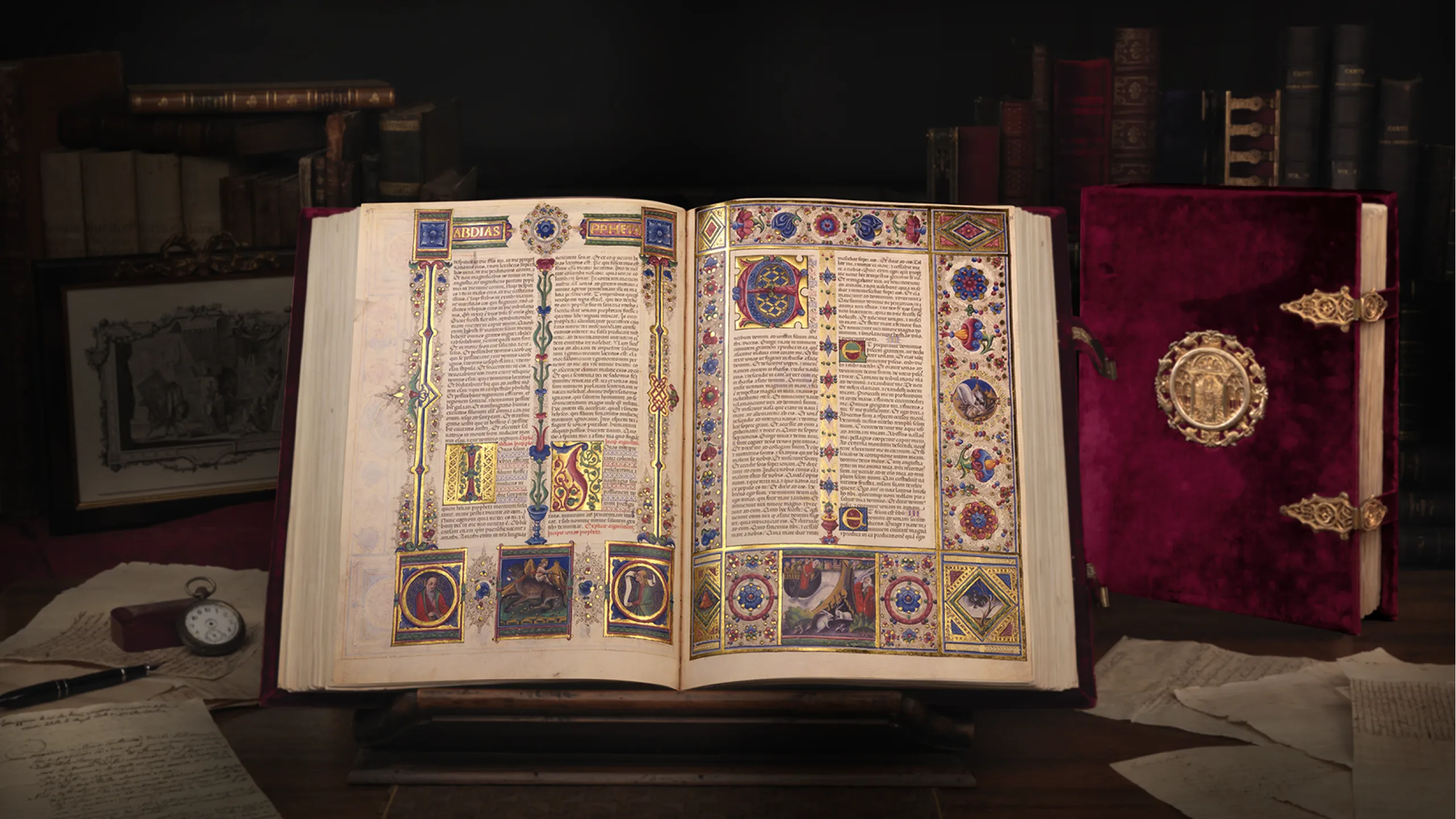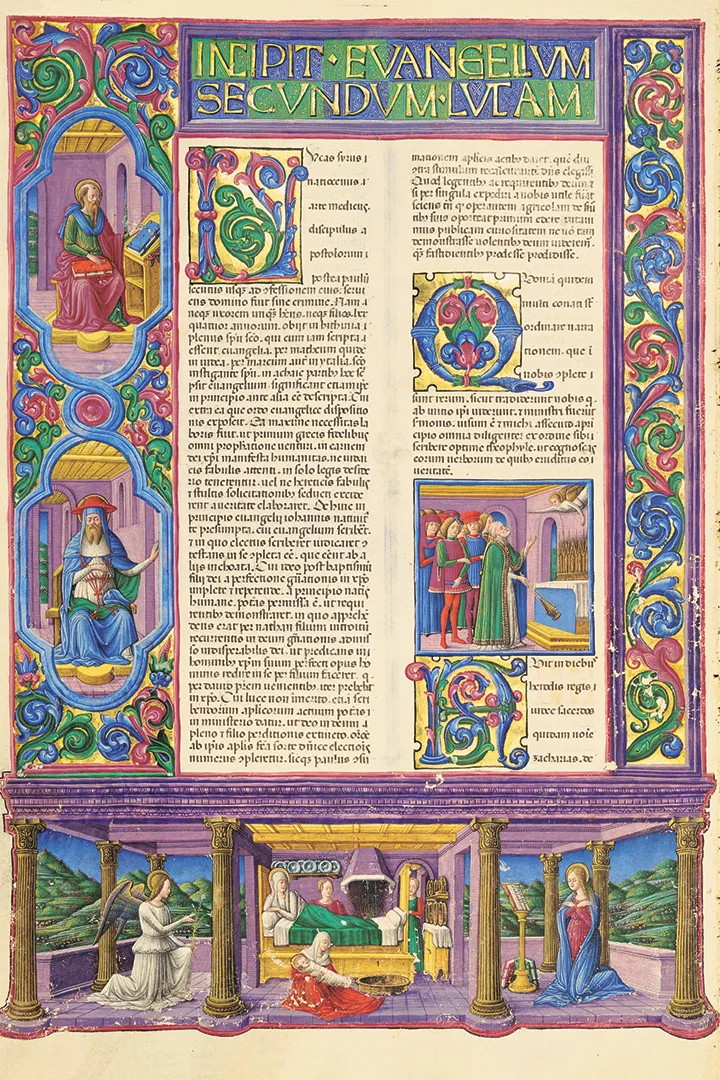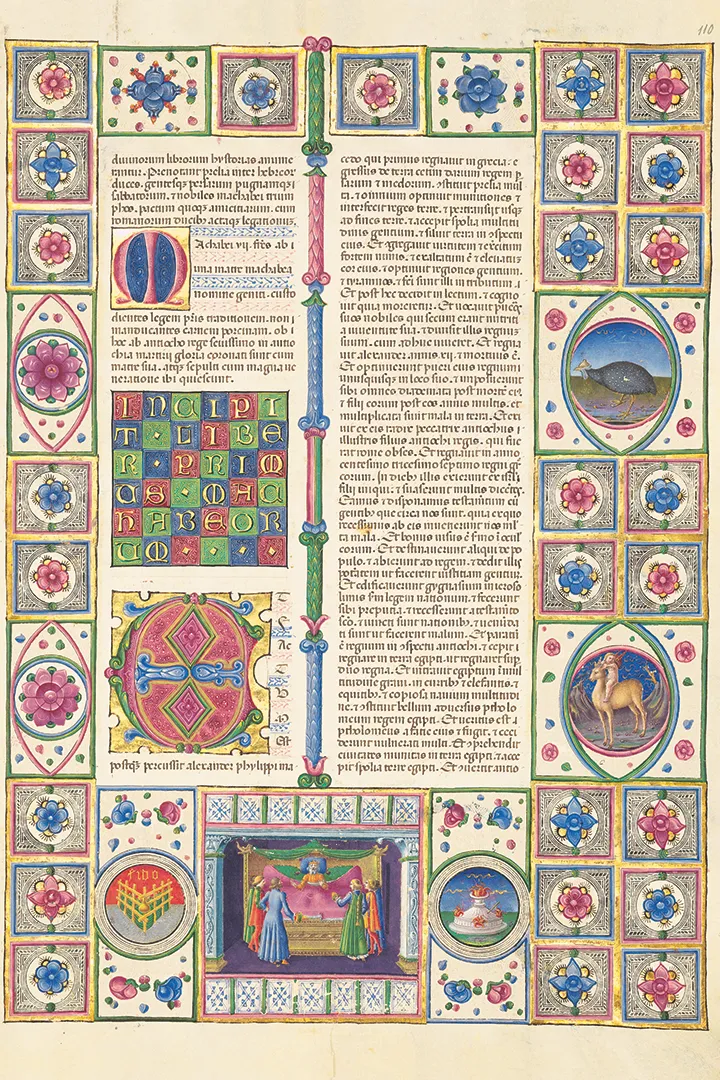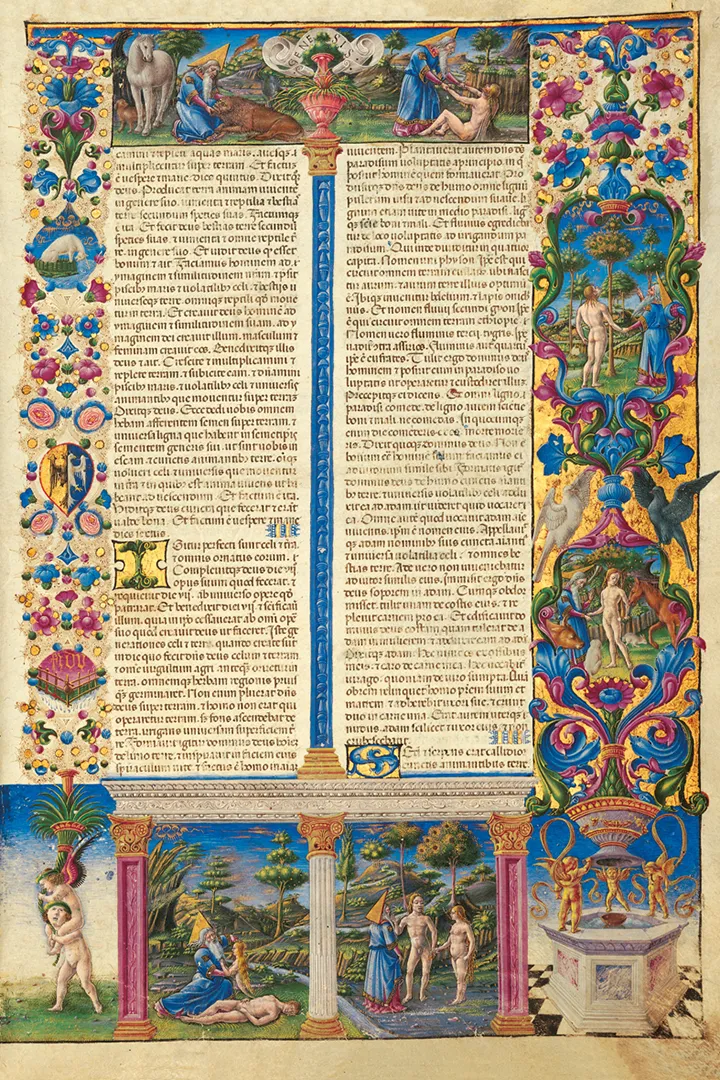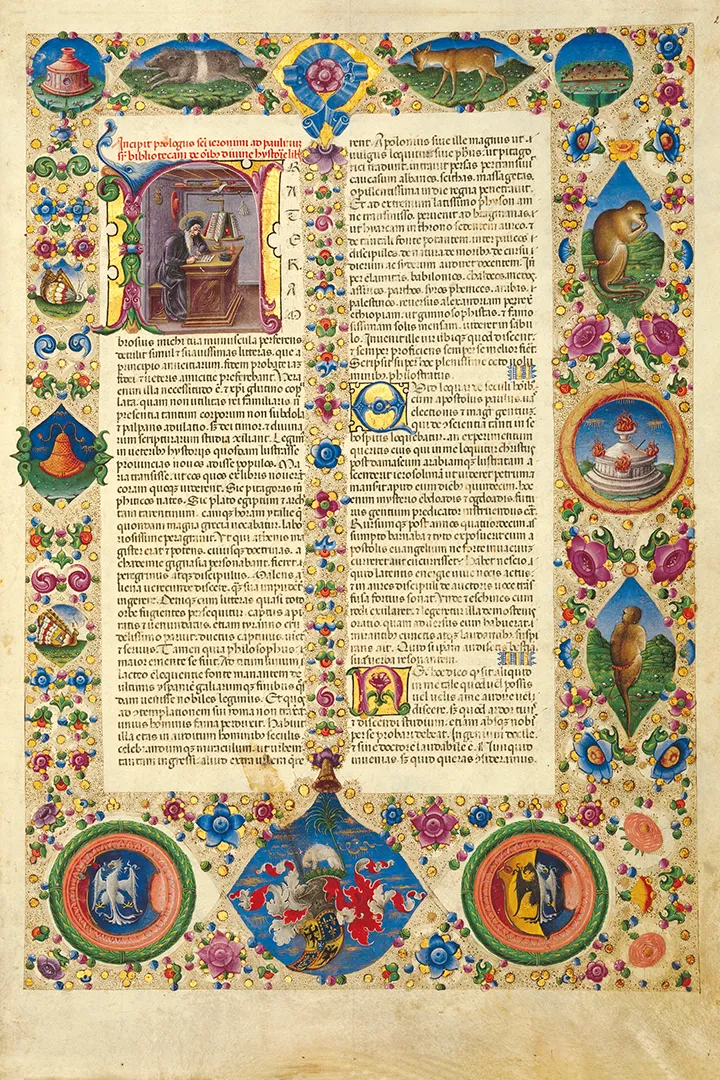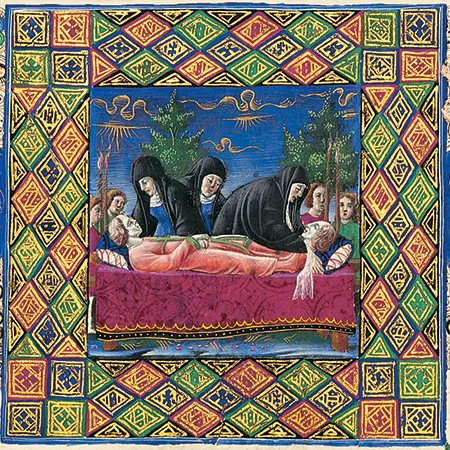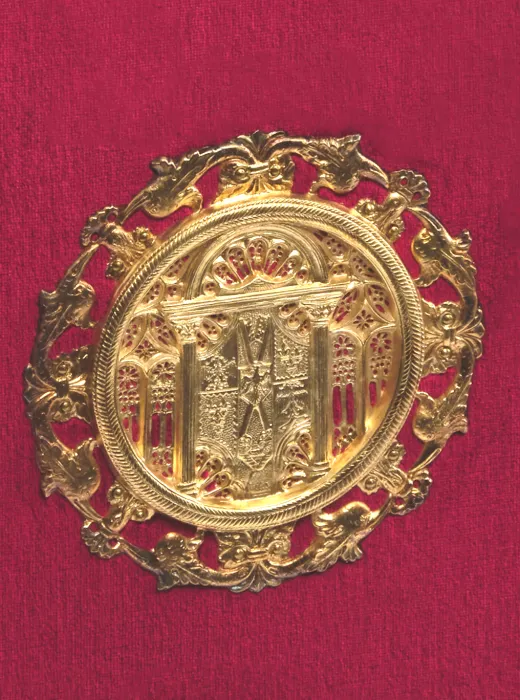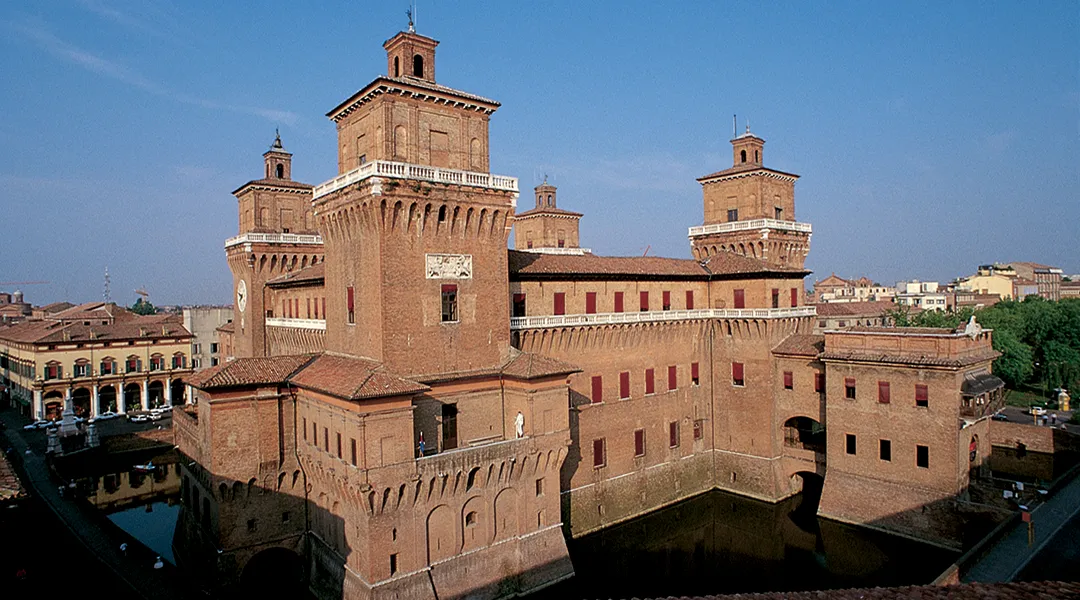A precious and inaccessible treasure chest reveals for the first time the richness of its treasures: the Bible of Borso d’Este, the most extraordinary Renaissance art gallery, offers itself to the admiration of enthusiasts and book lovers.
The Borso d’Este Bible is considered the richest illuminated manuscript that has come down to us. When Gutenberg’s press was already appearing in Europe, Borso d’Este commissioned the Bible from Taddeo Crivelli and Franco dei Russi, renowned illuminators of the Ferrara school who created it in just six years (1455-1461).
The 1212 pages that compose it, divided into two volumes, present, framed in countless friezes and decorative motifs, at least 5000 illuminated images: a truly unique Renaissance art gallery.
Borso d’Este’s Bible certainly represents the highest testimony of Ferrara book illustration in the mid-fifteenth century, given the richness and refinement of the miniatures that decorate it entirely.
Miniatures
The exceptional nature of the codex lies in its very rich illustrative apparatus: each codex, consisting of an average of three hundred leaves, is richly decorated on each page.
The incipit pages of the individual books stand out for their sumptuousness, decorated with large filigree friezes with flowers, multicolored leaves, geometric and naturalistic decorations, coats of arms, businesses, cherubs and animals and numerous vignettes within the text and on the bas de page.
The internal papers, relatively more sober, decorated with friezes and historiated vignettes, are illuminated by the extensive use of gold.
All the miniatures reflect the characteristics of the Ferrara court: one example above all, King Solomon, depicted as a Renaissance prince dressed like Borso. Even the architecture and all the details refer to the life and aesthetics of the time, offering an insight into those very refined courts.
The most advanced technology and the artisanal wisdom of the ancients combined to create the first complete facsimile of the richest illuminated codex in the world, a unique and unrepeatable work destined to remain in the history of publishing.
- Printed on specially manufactured paper, without the use of chemical brighteners, to maintain the brilliance of the colors and the consistency of the support unchanged over time
- Printed with a variable dot screen, which makes the texture of the typographical dot almost invisible, obtaining an effect equal to the continuous tone of photographic printing
- Printing of a hot foil for the reproduction of the gold, with subsequent printing over the gold to reproduce the engraving of the original and the micro-cracks produced over time on the surface
- Decori in argento 925% placcati in oro zecchino: un medaglione e due fermagli fissi sul piatto anteriore, oltre ai due fermagli mobili sulle cinghiette
- Decori realizzati con speciali calchi siliconici e rifiniti con traforatura manuale, che riproducono esattamente gli originali
- The die-cut follows the outer edge of each sheet of the original
- Binding entirely handmade, by the Gozzi artisan workshop in Modena, during the folding and collection phases of the files as in the original manuscript
- Stitching on five hemp nerves
- Capital stitching in two colors
- Cover made of wood panels covered with pure silk crimson velvet, custom fabric for this facsimile, side straps, internal leather zips and moerro fabric endpapers
- Decorations in 925% silver plated in pure gold: a medallion and two fixed clasps on the front plate, in addition to the two movable clasps on the straps
- Decorations made with special silicone molds and finished with manual perforation, which exactly reproduce the originals
The codex is accompanied by a commentary volume of approximately 300 pages, in the format of 24.5 x 31.5 cm, which presents a series of essays on the history of the codex and its miniatures, Borso d’Este and his court and detailed descriptions of each individual sheet.
La storia del codice
Two people have linked their names to the “most beautiful book in the world”, the illuminated Bible of the Estense University Library of Modena.
The first is Duke Borso d’Este, who commissioned this absolute masterpiece, created between 1455 and 1461 and completed in 1598. When the dukes moved the court to Modena, they brought the very precious codex with them.
In 1796, for fear of Napoleonic requisitions, the Bible and other precious codices were transferred first to Treviso, and later to Vienna, to the Library of Archduchess Maria Beatrice, mother of the Duke of Este Francesco IV. He brought the codes back to Modena in 1831, and they remained there until 1859, when Francis V, fleeing the city, took them with him back to Vienna. They finally arrived in Switzerland in 1918 brought by Charles I fleeing from Vienna, and in 1923 the codices were put up for sale through a Parisian antiques dealer.
At this juncture, the second protagonist of the manuscript’s history enters the scene: Giovanni Treccani, a Lombard industrialist and financier. In 1923, he purchased it for 5 million lire, bringing it back to Italy and donating it to the Italian State.
Two years later, Treccani founded an institute in Rome to draw up and publish the national encyclopaedia. Convinced of the existence of a fundamental relationship between economy and culture, he purchased the Bible and promoted the birth of the Encyclopaedia which today bears his name.
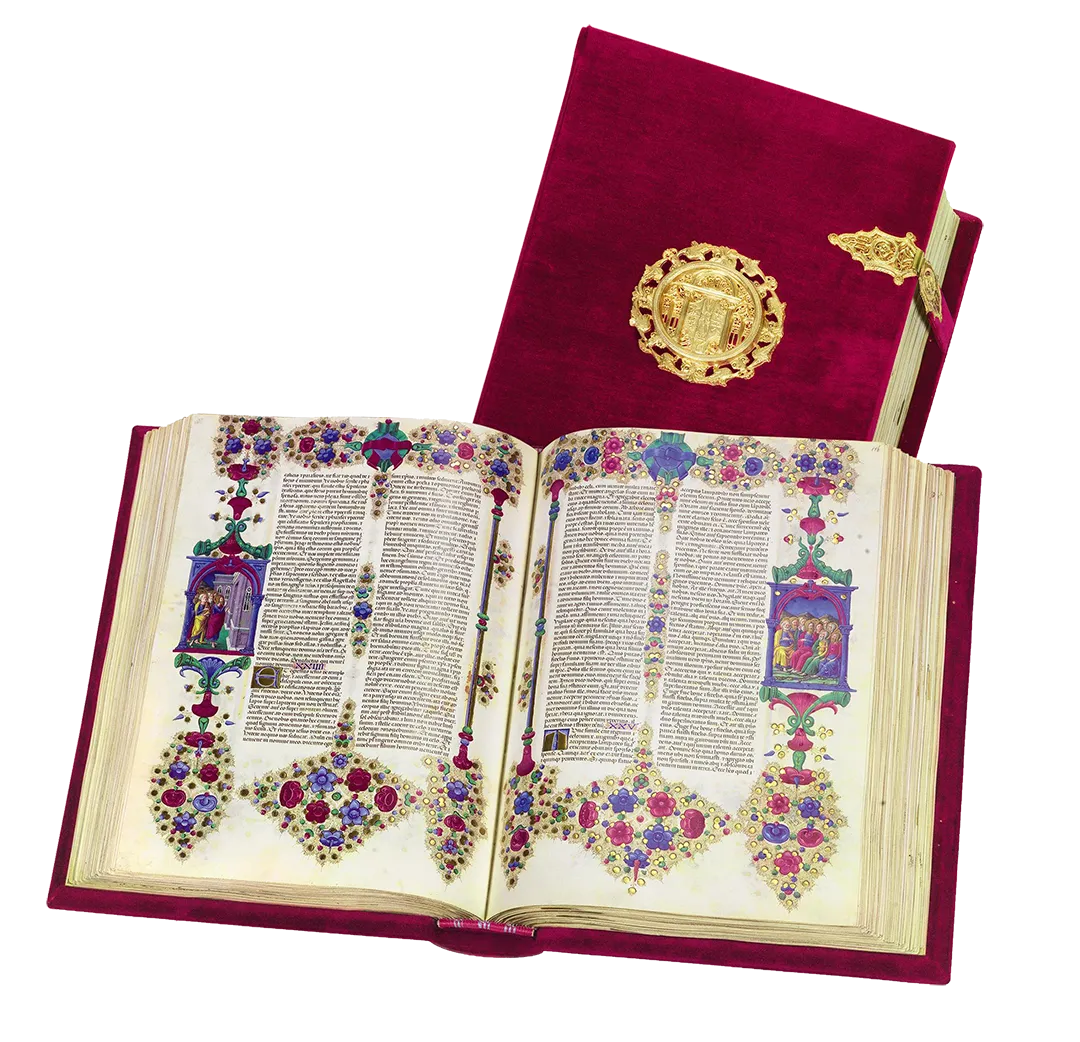
Caratteristiche dell’opera.
Full reproduction of Mss codes. Lat. 422 and Lat.423 of the Estense University Library
- Limited edition of 750 numbered and certified copies
- Each copy is accompanied by a declaration from the Director of the Estense Library which certifies the absolute fidelity of the facsimile to the original manuscript
- Two volumes reproduced in their actual format respecting the original foliation:
- I volume: 624 pages (1 bifoglio + 31 quinterns)
- II volume: 588 pages (1 duerno + 29 quinterni)
- size of each tome, closed: approximately 28 x 40 x 8 cm ₋ size of each tome, open: approximately 62 (+ 7.5 straps) x 40 x 8 cm
- page size: approximately 27 x 38 cm
The Client
Borso d’Este.

Abile diplomatico e “principe giusto“.
Skilled diplomat and “fair prince” (Principe Giusto).
Borso d’Este was the illegitimate son of the Marquis Niccolò II d’Este and Stella dei Tolomei, brother of Lionello and Ugo. Last marquis of Ferrara, in 1452 he obtained the ducal title for Modena and Reggio from Emperor Frederick III, and in 1471 also for Ferrara.
Although he was not as cultured and prepared as his brother Lionello, Principe Giusto and was a patron of fundamental works for the Renaissance such as the frescoes in the Salone dei Mesi in Palazzo Schifanoia and his famous Bible, one of the most precious illuminated manuscripts in the world.
La biblioteca impossibile.
The Borso d’Este Bible is part of the “The impossible library” (La Biblioteca Impossibile) series, the most authoritative and precious collection of facsimiles dedicated to the Renaissance. A unique project for completeness and scientific rigor inaugurated in 1995 by this codex and continued, year after year, with the reproduction of absolute masterpieces of illumination: from the monumental Bible by Federico da Montefeltro to the small Torriani Book of Hours, from the sumptuous Farnese Lectionary to the Duke of Berry’s very famous Très Riches Heures.
Contact Us.
To request further information or if interested in purchasing other titles from the Impossible Library, please contact us using the form below.
